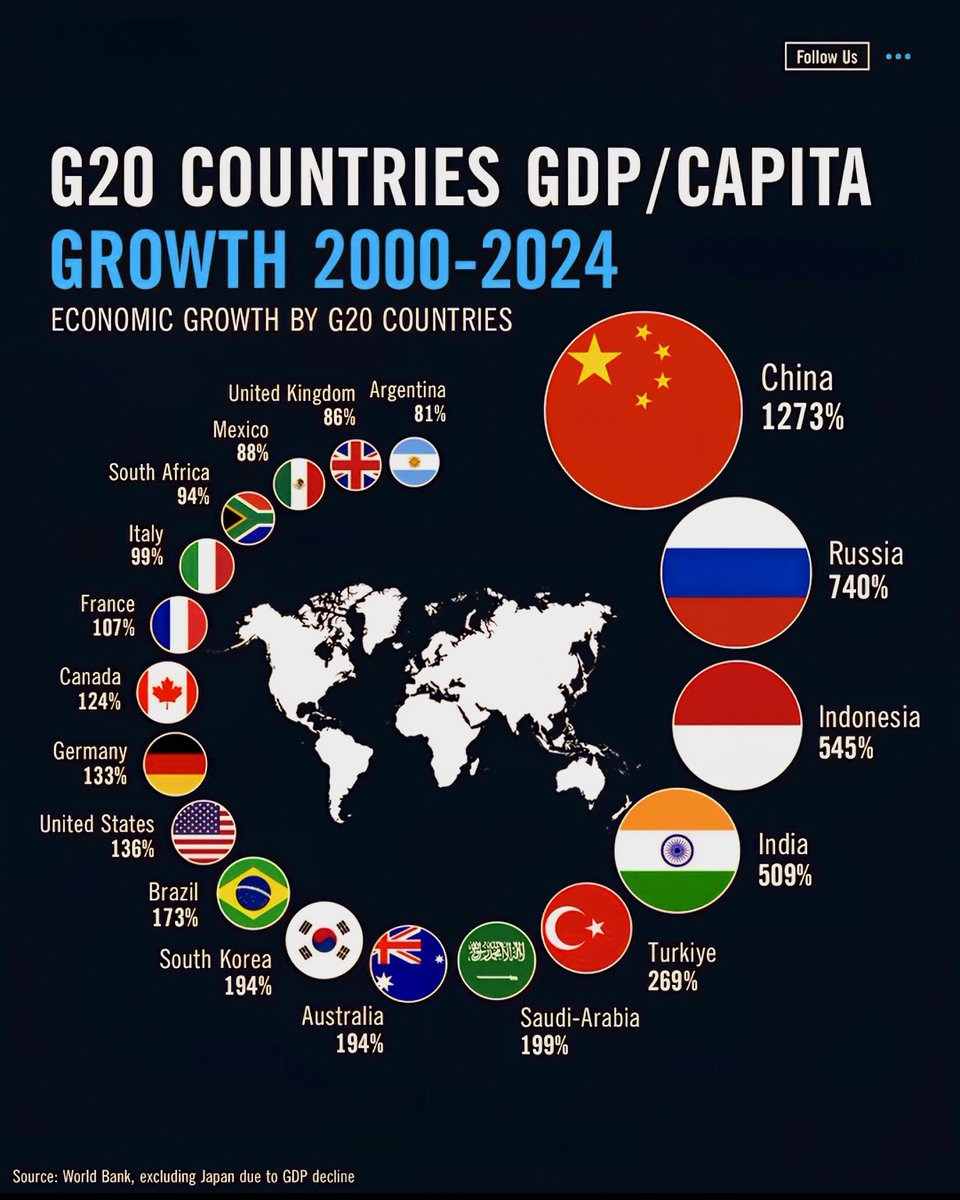Select Language:
G20 Countries: A 2025 Review of GDP Per Capita Growth from 2000 to 2024
Rapid Growth in India and China
India and China continue to stand out with remarkable economic advancements over the past two decades. India’s GDP per capita has seen a substantial rise, reflecting its rapid development trajectory. By 2024, India’s growth rate has outpaced many of its counterparts, driven by a booming technology sector, reforms in infrastructure, and a growing middle class. China, meanwhile, maintains its edge with sustained growth fueled by technological innovation and manufacturing prowess. The consistent upward trend for both nations underscores their roles as leading economic powerhouses in the G20.
Com European Economies Showing Signs of Stabilization
European G20 members such as Germany, France, and Italy have experienced steady but slowed growth in their GDP per capita since 2000. The aftermath of economic fluctuations and the recent energy transition efforts have contributed to cautious growth rates. Despite these challenges, the European Union countries collectively have demonstrated resilience, stabilizing their economies through policy adjustments, renewable energy investments, and strengthening trade relations. Germany, in particular, has managed to maintain a solid growth trajectory, driven by its advanced manufacturing and technological sectors.
The United States’ Steady Increment in GDP Per Capita
The US continues to see moderate but steady growth in GDP per capita, reflecting its resilient economy amid global uncertainties. Investment in innovation, technology, and healthcare has bolstered its economic performance. The data from 2000-2024 also highlights the influence of fiscal policies and consumer spending habits in maintaining the upward trend. The US remains a dominant economy in the G20, with its diverse economic base contributing to consistent growth.
Growth Challenges for Some G20 Countries
While many nations show substantial gains, several G20 countries face unique growth challenges:
- Brazil: Despite periods of economic reforms and privatization, Brazil’s GDP per capita growth has been inconsistent due to political instability and fluctuating commodity prices.
- South Africa: Facing long-term issues like inequality and political uncertainty, South Africa’s growth rate has lagged behind its peers.
- Argentina: Persistent inflation and economic volatility have hindered consistent growth in GDP per capita, disrupting living standards and economic stability.
Russia’s Mixed Economic Performance
Russia exhibits a mixed picture. While resource exports remain significant, global economic sanctions and fluctuating oil prices have impacted growth. From 2000 to 2024, Russia’s GDP per capita growth has been uneven, with periods of acceleration driven by energy exports but also setbacks due to geopolitical tensions and policy shifts.
Australia and Canada’s Resilience
Despite global economic uncertainties, Australia and Canada have demonstrated resilience, maintaining steady growth rates. Both countries benefit from abundant natural resources, strong mining industries, and stable governance. Their focus on innovation and sustainable development has helped sustain their upward economic trajectory.
Emerging Markets and the Future Outlook
Among the G20, emerging economies like Indonesia, Mexico, and Turkey have shown promising growth trends. Sustained population increases, urbanization, and investments in infrastructure have fueled their GDP per capita growth. Looking ahead to 2025, these countries are positioned to continue their upward momentum, provided they address issues such as political stability and institutional reforms.
Conclusion
The period from 2000 to 2024 illustrates a dynamic evolution of economic performance among G20 nations. Countries like India and China have led the charge with rapid growth, while developed nations are focusing on sustainability and stability. Challenges remain for some, but innovation, policy reforms, and global cooperation will shape their growth trajectories in the coming years. The economic landscape in 2025 continues to reflect the diverse factors influencing development across these influential nations.








